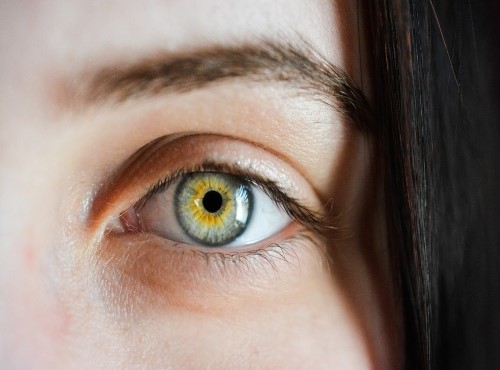
Your eyes are your windows to the world, as the cliché goes, but what happens when the glass grows blurry? You can’t whip out the vinegar and a rag, so visual difficulties indicate the need to make a call to your optometrist.
The good news? Many visual problems are extremely common and easily corrected. Read on to discover the most common visual problems and the treatment outlook for each.
1. Nearsightedness (Myopia)
If you have trouble seeing distances, you’re not alone. Over 40 percent of the U.S. population suffers from myopia, or nearsightedness. Fortunately, this visual problem has an easy fix — corrective lenses or contacts.
Myopia occurs when the eye grows too long from the iris to the back where the optic nerve connects. And prevalence of the condition is growing, especially in Asian nations. Researchers remain unclear as to the exact reason why, though they suspect close studying and lights from devices like laptops play a role.
2. Farsightedness (Hyperopia)
Maybe you struggle to see when you hold things close to your face, but you can read street signs from a mile away. If so, you may suffer from hyperopia, or farsightedness. The condition is even more common than myopia with approximately half the population affected.
As with myopia, genetic predisposition plays a role. The condition rarely impairs driving ability the way myopia does, but nevertheless leads to headaches and eye strain when left uncorrected.
3. Astigmatism
Astigmatism occurs when the eye is no longer round, but rather shaped more like an egg or a football. When you get an eye exam, the CYL number refers to astigmatism, and doctors often include a zero to indicate they did not omit this information.
If you wear contacts, you will need special ones to correct astigmatism. However, some wearers find such lenses fall out of their eyes more easily. Given such lenses cost more, many people with severe astigmatism purchase reading glasses in conjunction with regular contacts to correct myopia to treat the condition.
4. Cataracts
As people age, proteins in the lens of their eye begin breaking down, leading to a cloudy visual condition known as cataracts. The result is a bit like looking through a foggy window on a rainy day. You can make out shapes, but everything is blurry.
Like many other eye conditions, cataracts have a genetic component. However, exposure to the sun may speed development of the condition. Always wear sunglasses with full-spectrum UVA and UVB protection when out on sunny days to stave off the disorder.
5. Macular Degeneration
Macular degeneration affects over 10 million Americans and is one of the leading causes of vision loss. When the center portion of the eye deteriorates, the organ can no longer focus the images it sends to the brain. The result is like a camera lens gradually covering more and more of the visual field.
Caucasians run a higher risk of the disease, so researchers believe genetics play a role. While you cannot cure macular degeneration, smoking doubles your risk of developing the condition. Kicking the butts decreases your chances of developing the condition.
6. Glaucoma
Glaucoma occurs when intraocular pressure (IOP) grows too intense. This causes damage to the optic nerve, the nerve responsible for transmitting visual images to your brain.
Doctors treat glaucoma with eye drops or surgery. However, recent evidence suggests medical cannabis as an effective treatment. One study showed the use of cannabis lowered IOP by 60-65 percent in both individuals with the disorder and normal individuals alike.
7. Diabetic Retinopathy
Diabetic retinopathy occurs when the disease damages blood vessels in the retina of the eye. The condition occurs in those with both type I and type II diabetes and can lead to blindness.
In order to prevent diabetic retinopathy, managing your diabetes proves paramount. When left unchecked, the condition can cause the retina to detach, leading to permanent visual impairment. Take your insulin as directed and see an eye professional once per year for an exam.
8. Optic Neuritis
Those who suffer from multiple sclerosis (MS) often suffer from optic neuritis, an inflammation of the optic nerve. The condition can lead to complete blindness if left untreated.
Like in macular degeneration, symptoms often begin with a scotoma, or dark spot in the center of your vision. Similar to migraine sufferers, those with optic neuritis often experience flashing lights. Treatment includes a course of steroids, and most cases clear up within a year — however, given the chronic nature off the disease, sufferers must remain vigilant (pun intended) about relapse.
Protecting Your Precious Vision
No one probably relishes the thought of something going wrong with our eyes. However, visual disturbances are exceedingly common. By learning about the most common eye disorders, you can take proactive steps like seeing your doctor to prevent further impairment.






Be the first to comment